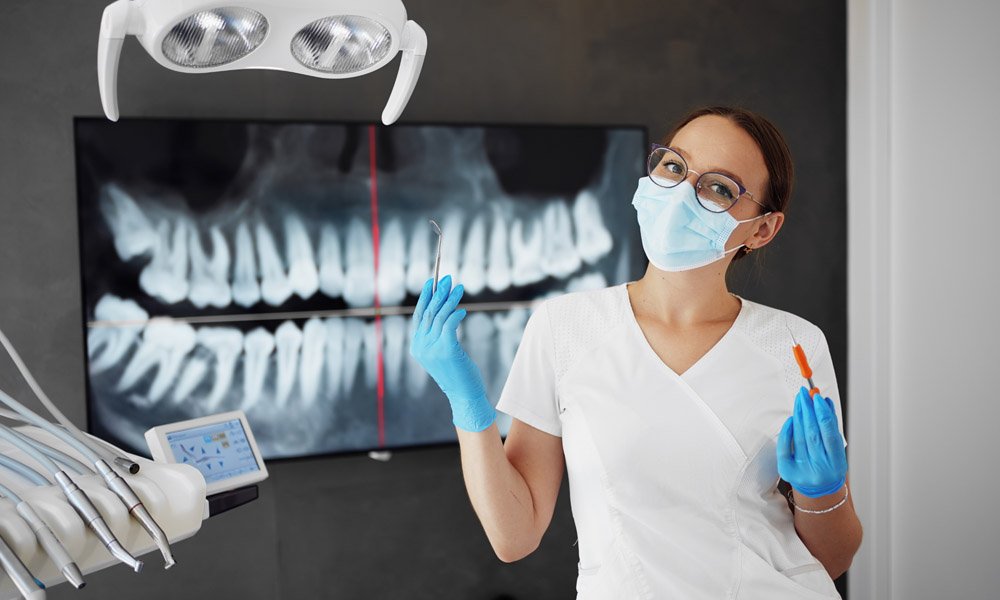Dental clinics must balance patient care with efficiency in today’s fast-paced healthcare environment. As consumer expectations rise and industry needs expand, dental practices must manage complex operations, reduce overhead expenses, and improve patient happiness. Streamlining operations is about long-term success and excellent service, not just saving time or money. Dental clinics can increase operational efficiency with technology, resource management, and patient-centered treatment.
Embracing Technology to Optimize Workflow
Technology is crucial to dental clinic transformation. Software, data management, and diagnostic tools can minimize administrative burdens and boost efficiency. Appointment management software is a powerful clinic tool. This technology helps organize calendars, decreases wait times, avoids appointment overlaps, and lets patients book, reschedule, and cancel appointments online.
EHRs are another major breakthrough in dental office administration. Digital records allow dental clinics to securely retain and access patient histories, decreasing errors and increasing treatment outcomes. For dental teams to swiftly retrieve and share patient data with patients and specialists, cloud-based solutions have improved accessibility and security.
Dental diagnostic accuracy has also improved using digital imaging. Clearer images from intraoral cameras and digital X-rays improve treatment planning and patient communication. These technology advances improve care quality and practice efficiency.
Improving Operational Efficiency with Comprehensive Resources
Modern dental clinics need the necessary instruments and systems to be efficient. Dental office management software simplifies billing, insurance claims, and patient communications. These processes can be automated to reduce human error and speed up workflows, letting personnel focus on patient care.
Many dental clinics use integrated scheduling, billing, and patient record systems. A unified ecosystem where data flows seamlessly between departments reduces redundancies and connects every aspect of the patient experience.
Investment in staff training is crucial. From dentists and hygienists to office administrators, ongoing training ensures that all team members can use new technologies and follow clinic regulations. As clinics adopt more advanced systems, staff upskilling is essential for efficiency.
Fostering a Patient-Centered Approach
At the heart of any successful dental clinic is its commitment to patient care. Streamlining operations shouldn’t come at the cost of patient experience. In fact, efficient practices can enhance the overall patient journey by reducing wait times, improving communication, and providing a more personalized care experience. One way clinics can improve patient care is by incorporating automated communication tools that send appointment reminders, follow-up messages, and satisfaction surveys.
A patient-centered approach also extends to creating a welcoming and transparent environment. Whether it’s through clear billing practices, friendly staff interactions, or comfort in the waiting room, small changes can make a big difference in how patients perceive the clinic. A positive experience fosters trust and loyalty, which is key to long-term success.
Furthermore, utilizing patient feedback through surveys and reviews helps practices identify areas for improvement and refine their care delivery strategies. By actively listening to patients, clinics can not only enhance satisfaction but also retain a loyal client base.

Streamlining Financial and Inventory Management
Managing finances and supplies effectively is another cornerstone of operational efficiency in a dental clinic. Streamlined financial management ensures a steady cash flow and reduces the time spent on billing and insurance claims. Automated billing systems reduce errors and streamline the submission of insurance claims, speeding up reimbursements and improving overall financial health. For clinics that work with multiple insurance providers, investing in integrated software that tracks claims and payments can significantly reduce administrative strain.
On the inventory side, maintaining the right stock levels is critical for avoiding disruptions in treatment while minimizing waste. Automated inventory management systems can help clinics track stock levels in real time, alerting staff when supplies are low and prompting reorders before items run out. This system not only prevents shortages but also helps dental clinics optimize their spending by ensuring that supplies are purchased only when necessary, and that they are sourced at the best possible prices.
Building a Collaborative and Efficient Team
No matter how advanced the technology, the success of a dental clinic relies on the strength of its team. A cohesive, well-trained team is crucial for maintaining high standards of care and operational efficiency. Streamlining operations involves creating a collaborative environment where roles are clearly defined, communication is open, and staff feels valued.
Leadership plays a crucial role in building a strong clinic culture. Encouraging teamwork, offering regular feedback, and recognizing achievements are essential practices that improve morale and productivity. When staff members are motivated and aligned with the clinic’s goals, they are more likely to perform at their best, contributing to an overall efficient and smooth-running practice.
Looking to the Future: Innovations in Dental Practice Management
The future of dental practice management lies in innovation and adaptability. Emerging technologies like artificial intelligence (AI) are already making waves in diagnostic tools, patient communication, and data analysis. For example, AI-powered systems can help predict patient treatment needs, assist with diagnostics, and even automate routine tasks like patient scheduling.
Telehealth services, especially in the form of virtual consultations, are another growing trend that can streamline clinic operations and increase patient access. By offering consultations via video calls or digital platforms, clinics can reduce patient wait times and provide care in a more flexible and convenient manner. These virtual services can be especially beneficial for follow-ups, consultations, or minor issues that don’t require an in-person visit.
Data analytics will also play an increasingly important role in optimizing clinic performance. By analyzing patient data, appointment trends, and financial records, dental clinics can make data-driven decisions to enhance efficiency and improve patient outcomes.
In conclusion, streamlining operations in modern dental clinics is not merely about adopting new technology; it’s about creating an environment that supports quality care, enhances efficiency, and fosters growth. With a patient-centered approach, the right tools, and a cohesive team, dental clinics can thrive in today’s dynamic healthcare landscape.
Frequently Asked Questions
What is the main focus of this article?
The article focuses on streamlining operations in modern dental clinics.
How can technology help improve clinic efficiency?
Technology can automate scheduling, record-keeping, and patient communication, reducing administrative burdens.
What are some key strategies for improving patient care?
Adopting automated communication tools and creating a comfortable clinic environment enhances patient care.
Why is team collaboration important?
A cohesive team ensures smooth operations, improves morale, and contributes to better patient outcomes.



